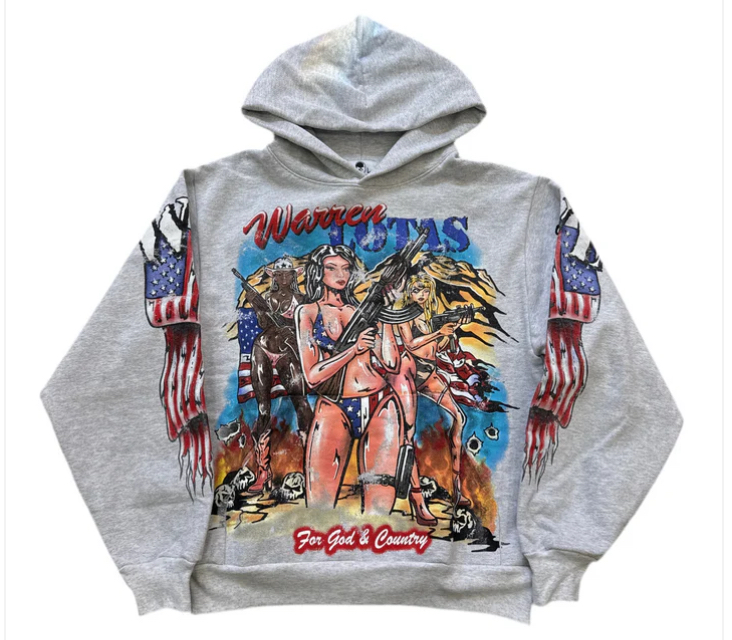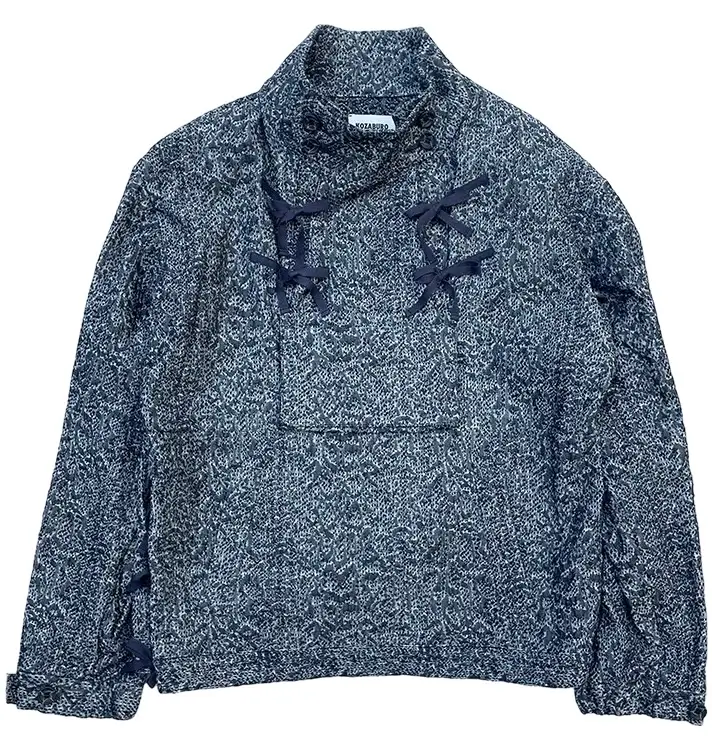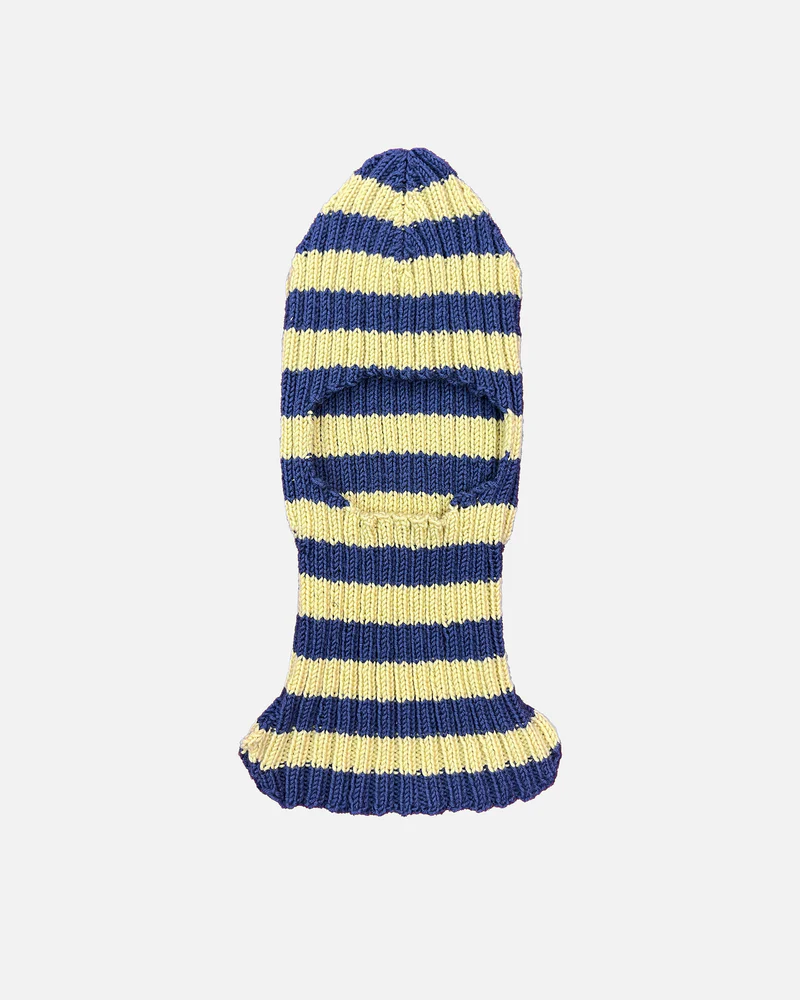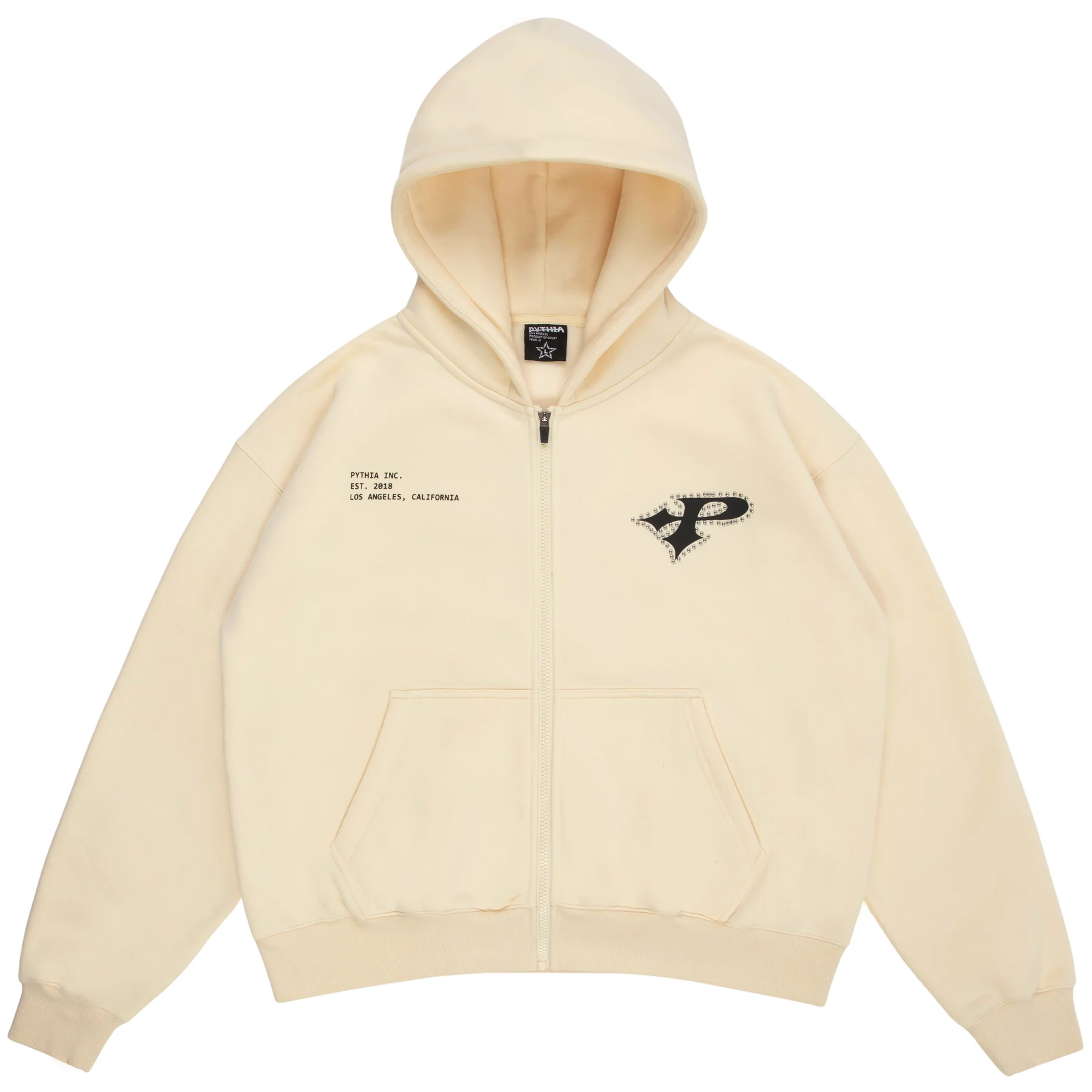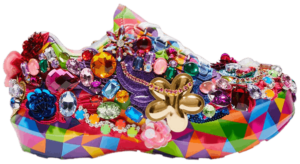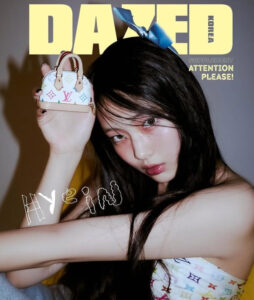In a streetwear culture inundated with monochrome minimalism, nostalgia-heavy logo flips, and ironic self-referentiality, few designers operate with as much raw defiance—and visual aggression—as Warren Lotas. His aesthetic is not subtle. It is a loud, ink-drenched collision of horrorcore surrealism, outlaw Americana, and bootleg bravado. The Warren Lotas “Corps” Hoodie, often referred to as the For God & Country edition, stands as a particularly provocative artifact in his archive: an oversized grey pullover printed with unapologetic violence, unapologetic femininity, and unapologetic Americanism.
This is not a piece for the quiet or the cautious. It is, in form and image, a battle cry dressed in grey fleece.
The Canvas and the Cut: Physical Construction
At its core, the “Corps” hoodie is constructed from heavyweight cotton fleece, likely a 14 oz or 16 oz base, consistent with Lotas’ usual approach to durable, premium blanks. The hoodie features a classic boxy cut with dropped shoulders and a thick ribbed hem, reinforcing a sense of grounded bulk that complements the thematic weight of the graphics. The inside is brushed to create a soft, insulated feel—streetwear that wraps you like armor.
Stitching appears triple-locked at the shoulder and side seams, emphasizing wearability and long-term construction. The drawstrings are absent, allowing the hood to remain in a natural, drooped state—a subtle rebellion against functionality in favor of silhouette.
But the structure of the hoodie is not the headline. It’s what covers it that demands attention.
The Graphic: Guns, Flags, and Pin-Up Fury
The front of the hoodie explodes with a saturated tableau of militarized pin-up women, each clutching exaggerated weaponry, wrapped in distressed American flag iconography, and posed against a hellscape of skulls, fire, and shattered concrete. This is Warren Lotas at his most cinematic, borrowing equally from grindhouse posters, 1980s action films, and heavy metal album covers.
At the center of the composition, a cartoonishly rendered woman in a stars-and-stripes bikini dominates the foreground. She holds an assault rifle like a sacred artifact, her expression half-warrior, half-siren. Her stance is confrontational—legs apart, weapon upright—conveying power but layered with objectification. This duality is crucial: the image is purposefully exaggerated, a pastiche of the kind of propaganda and pulp imagery that shaped late 20th-century American visual culture.
Behind her, two additional female figures flank the composition. One wields a rocket launcher over her shoulder. The other unfurls an American flag as if it were both shield and shroud. Their eyes are shadowed, their skin hyper-glossed. There is nothing naturalistic about them—they are mythical avatars, digitally inked and over-saturated, their bodies edged with flames, their feet rising out of scorched ground littered with bones.
Above this trio, the words “Warren Lotas” scream in dripping red script, giving way to the capitalized “USA,” cracked and fragmented like a fading tattoo. Below, the phrase “For God & Country” is stitched in stark white against a crimson banner—half religious oath, half marketing slogan.
This isn’t just a hoodie. It’s a visual weapon. A narrative stitched into cotton.
The Sleeves: Flags in Flames
The left and right sleeves extend the story. American flags trail downward in tatters, their stripes exaggerated into almost spectral forms. These aren’t flags blowing in a clean breeze—they are flags mid-burn, worn and ghostlike, as if mourning the patriotism they once signified.
One sleeve includes a distorted skull, mid-scream, its placement aligning with the wearer’s elbow—an anatomical flourish that nods to tattoo placement and anatomical symbolism. Lotas knows how to use space. No inch of the hoodie is wasted.
Interpretive Themes: Irony, Patriotism, and Weaponized Femininity
Warren Lotas has always played with parody and pastiche, particularly around the iconography of Americana. In the “Corps” hoodie, he takes that to maximalist extremes. The images operate on multiple levels:
- On the surface, it’s a celebration of hyper-American bravado: guns, flags, women, fire.
- At another level, it’s a parody of 1980s American excess and military fetishism.
- Deeper still, it’s a critique—one that positions modern American identity as both spectacle and tragedy, with femininity co-opted into propaganda and violence.
By choosing to depict women as both warriors and objects, the hoodie doesn’t merely celebrate or objectify—it forces confrontation. The viewer must contend with the discomfort of seeing femininity militarized, patriotism sexualized, and violence romanticized. It’s a hoodie that demands opinion, even if that opinion is rejection.
Streetwear as Subversion
In an era where fashion is constantly cycling between self-awareness and self-indulgence, Lotas lands somewhere in between. His work is neither high fashion nor ironic parody. It exists in its own lane—cultural collage as clothing. The “Corps” hoodie typifies this ethos. It can be worn by skateboarders, punk kids, luxury collectors, or post-ironic Gen Z stylists. But no matter who wears it, it resists quiet.
There are no clean lines here. No aspirational minimalism. The “Corps” hoodie is gritty, oversaturated, violent, and utterly American in its spectacle. In this way, it becomes more than merchandise. It becomes performance—the body as billboard, the chest as message, the sleeves as war cry.
Flow
Since its release, the hoodie has gained cult status among Lotas loyalists. Online resale markets price it well above its original drop value, and it’s been seen on rappers, underground visual artists, and controversial Instagram influencers. Critics often accuse Lotas of aestheticizing violence without nuance, while supporters champion him as one of the few designers willing to get dirty with America’s iconography.
It remains a piece that splits opinion—a classic sign that the design is working exactly as intended.
Impression: A Hoodie That Doesn’t Apologize
The Warren Lotas “Corps” hoodie is not here to make you comfortable. It doesn’t try to fit into wardrobes defined by clean silhouettes or seasonal color palettes. Instead, it challenges the limits of wearable art, questioning the boundaries between patriotism and parody, iconography and identity, fetish and fear.
For some, it will be offensive. For others, brilliant. But for all, it is impossible to ignore.
And in a fashion world increasingly obsessed with invisibility and performative neutrality, that might be its most radical quality of all.
No comments yet.

